FBI Files Reveal Last Moments in Lives of 3 Civil Rights Workers Murdered in 'Mississippi Burning' Case
On the 60th anniversary of Mississippi’s infamous racially-motivated triple homicide, the FBI case file reveals disturbing details
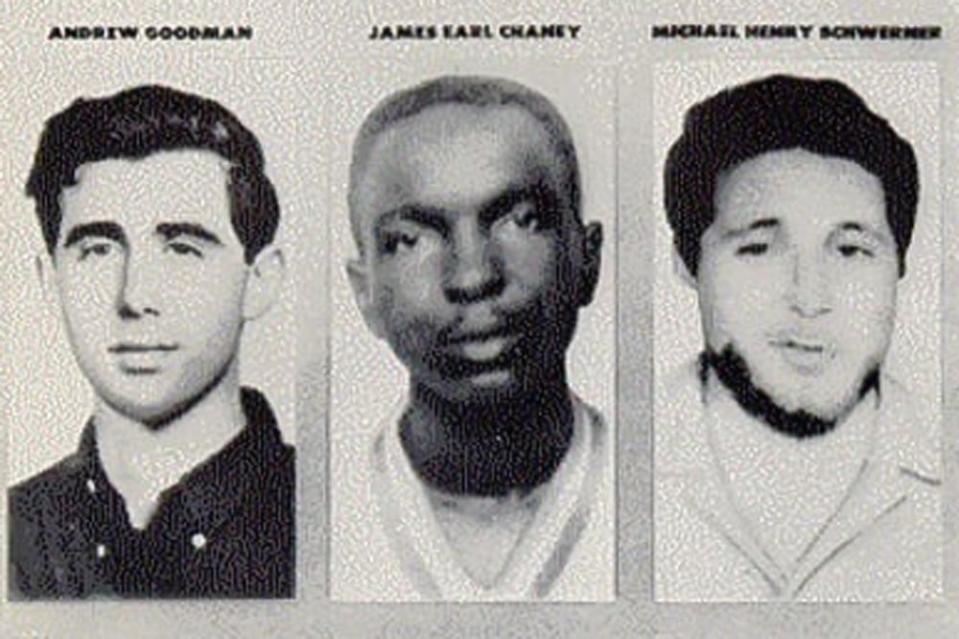
FBI
Left to right: the murdered civil rights workers Andrew Goodman, James Earl Chaney and Michael Henry Schwerner.It started with a traffic stop. A Black man driving with two White men was pulled over by the deputy sheriff on an accusation of speeding.
In Philadelphia, Miss., on June 21, 1964, the three men in the car were an unlikely trio.
James Earl Chaney, a 21-year-old Black Mississippian, had a 10th-grade education and worked as an apprentice plasterer. The two White men — Michael Henry Schwerner, 24, and Andrew Goodman, 20 — were from New York City.
When local police stopped the men – civil rights activists who had just visited the charred site of Mount Zion Methodist Church, a Black church burned to the ground earlier that month – they had already been on the radar of the local Ku Klux Klan.
Around 3:30 p.m., Chaney was incarcerated for speeding, and Goodman and Schwerner were thrown in jail “for investigation," federal investigators wrote.
In the early morning hours of the next morning, a resident drove past their blue station wagon’s burned remains. Flames later described by the witness as “ten to twelve feet high” per a special agent's report leapt from nearby bushes, later giving federal investigators the case’s infamous name: Mississippi Burning, abbreviated to MIBURN.
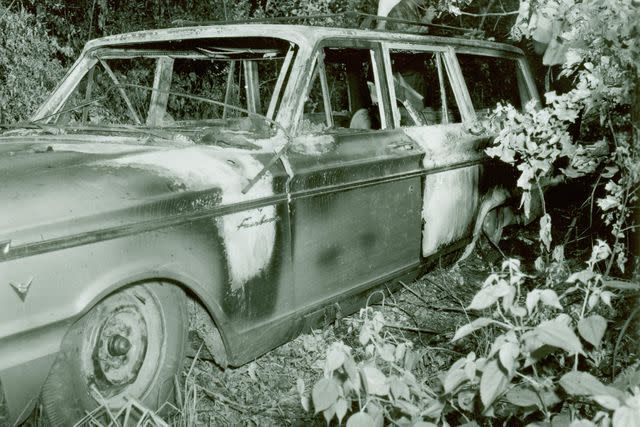
FBI
Authorities located the burned out blue 1963 Ford station wagon on June 23, 1964. A witness later reported seeing the fire in the early morning of June 22.What is known of the men’s final hours – at the hands of Mississippi law enforcement and local Ku Klux Klan members – is detailed in hundreds of pages of FBI files, still heavily redacted 60 years later, which were obtained by PEOPLE.
While the men were behind bars, several local White men gathered at the Longhorn Drive-In to discuss two local Ku Klux Klan groups joining forces in “whipping” the men, James Edward Jordan, one of those men later told the FBI.
Later, Jordan and others met with a person whose identity remains redacted in official files, who told them: “We have a place to bury them and a man to run the dozer to cover them up.”
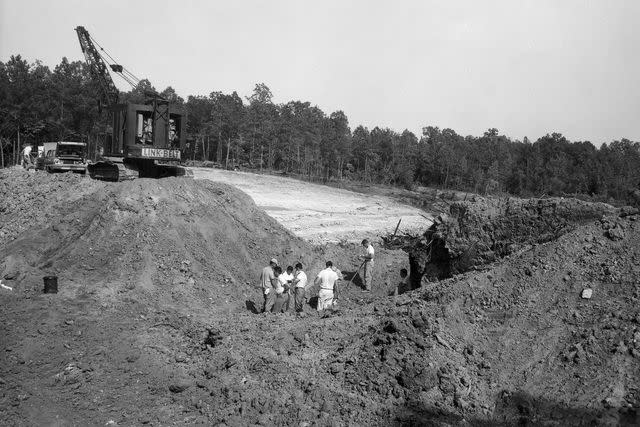
FBI
Six weeks after the men were fatally shot, investigators recovered their bodies at a farm near Philadelphia, Miss., where a dam had been under construction.Want to keep up with the latest crime coverage? Sign up for PEOPLE's free True Crime newsletter for breaking crime news, ongoing trial coverage, and details of intriguing unsolved cases.
Chaney’s $25 bail was paid, and the three men were released from Neshoba County Jail around 10:30 p.m. June 21, and “by prearranged plans” the “participants” in the attack were informed that the Mississippi Highway Patrol would “intercept” the civil rights workers who were driving back in their blue station wagon, per a narrative of the night later summarized by a special agent and based on interviews with collaborators.
Instead, a person whose name is redacted in the files stopped the men on Highway 492, “placed the three civil rights workers in the backseat of his car and drove them down a nearby country road," according to the special agent's narrative.
There, the group that had followed them from Philadelphia, Miss., killed the three men with “a volley of shots,” and buried them with a bulldozer at a dam — which was then under construction — at a local farm, the narrative states.
Later, the group gathered with a jug of gasoline to burn the 1963 Ford vehicle.
The men’s bodies were later found 14 feet underground at the Neshoba County farm on August 4. The men, whose bodies were laid head to toe, were identified by their fingerprints.
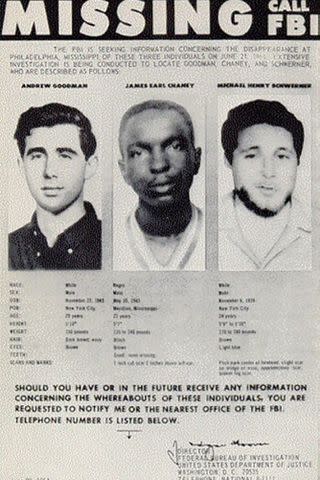
FBI
Amidst swirling rumors that the men were faking their disappearance, their bodies – riddled with bullets – were found buried at a local farm later that summer.The men knew that fighting for change — and getting Black people registered to vote — was dangerous in Mississippi.
Schwerner had come to Mississippi to organize local boycotts and aid in voter registration in a state that at the time had only registered 6.7% of eligible Black voters, per the U.S. Commission on Civil Rights.
On June 16, local KKK members came to the Methodist church looking for Schwerner, but they couldn't find him. That group beat church members and set the church on fire.
Goodman, a junior anthropology major at Queens College in New York, carried with him a salmon-colored paper with the names of five people in New York City he could call if he needed to get bailed out of a Mississippi jail.
Living in a small Mississippi town as a Black man, Chaney was a target even before he put on a straw cowboy hat with Civil Rights Movement buttons and left home in the station wagon that morning.
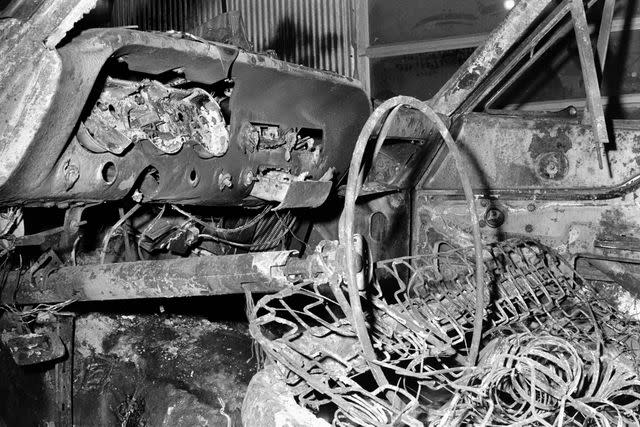
FBI
The charred remains of the civil rights workers' Ford station wagon, the vehicle they were driving when Deputy Sheriff Cecil Price pulled them over June 21, 1964.An activist who called Neshoba County Jail by 9 p.m. the day the men were arrested were told that: “No one of the description he gave were being held," another activist reported back to the FBI, according to the files.
An hour and a half later, the men were released from that jail only to be followed by their killers.
Schwerner’s young widow, Rita, was stalked through town as she searched for her husband.
Ultimately, 18 people — including Neshoba County Sheriff Lawrence Rainey and his deputy, Cecil Price, as well as Edgar Ray Killen, a Baptist preacher and founding member of Philadelphia’s KKK — were indicted in connection to the slayings.
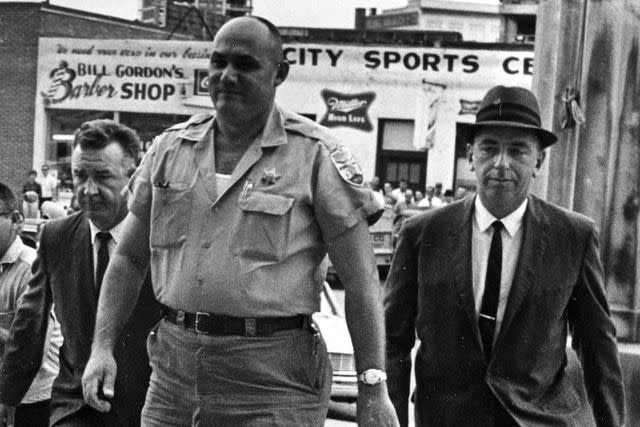
FBI
FBI agents escort Sheriff Lawrence Rainey to court in October 1964.In closing statements prosecutor John Doar told jurors that a not guilty verdict would “declare the law of Neshoba County to be the law of the state.” He added: “What you twelve people do here today will long be remembered.”
On October 20, 1967 seven men were found guilty, although both the sheriff and the preacher went free.
Decades later, Killen was charged with murder in a so-called Southern “atonement” trial in 2005. A jury convicted him of three counts of manslaughter, and he was sentenced to 60 years behind bars, The New York Times reported. He died in prison.
No one was ever convicted of murder.
For more People news, make sure to sign up for our newsletter!
Read the original article on People.


